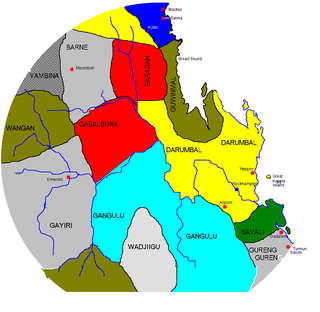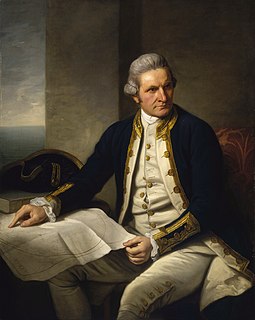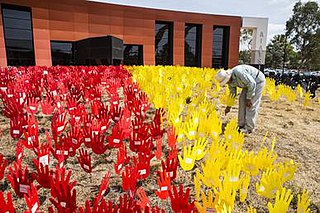This page is based on this
Wikipedia article Text is available under the
CC BY-SA 4.0 license; additional terms may apply.
Images, videos and audio are available under their respective licenses.
The Gidabal, also known as Kitabal and Githabul, are an indigenous Australian tribe of southern Queensland, who inhabited an area in south-east Queensland and north-east New South Wales, now within the Southern Downs, Tenterfield and Kyogle Local Government regions.
The Kokangol (Koko-Gol), or Yuwula, are said to have been an Indigenous Australian people of Queensland. Some dispute this, suggesting the name may be a synonym for Aghu Tharnggala, or may simply be the name of a language consultant.

The Kabalbara also rendered Gabalbura and Gabulbarra, is an Australian aboriginal tribe of northern Queensland. No linguistic information has been recorded.
The Bibulman (Pibelmen) were an indigenous Australian people of the southwestern region of Western Australia
The Mandi, otherwise known as Manthi, were an indigenous Australian people of Western Australia.
The Mutumui were an indigenous Australian people of northern Queensland.
The Wikampama were an indigenous Australian people of Cape York Peninsula in northern Queensland.
The Ngombal, also known as the Ngumbarl, are an indigenous Australian people of Western Australia.
The Kalaako (Kalarko) were an indigenous Australian people of the Goldfields-Esperance region of Western Australia.
The Lanima were an indigenous people of the state of Queensland.
The Yanda were an indigenous Australian people of the state of Queensland.
The Wiknatanja were an indigenous Australian people, one of the Wik tribes of the Cape York Peninsula of northern Queensland.
The Wik Paach or Wikapatja were an indigenous Australian people of the Cape York Peninsula of northern Queensland.
The Rungarungawa were an indigenous Australian people of the state of Queensland.
The Julaolinja were an indigenous Australian people of the state of Queensland.
The Ewamin or Agwamin were an indigenous Australian people of the state of Queensland.
The Yilba, also written Ilba, were an indigenous Australian people of the state of Queensland.
The Kulumali were an indigenous Australian people of the state of Queensland.
The Kunggara, also known as Kuritjara, are an indigenous Australian people of the southern Cape York Peninsula in Queensland.
The Madjandji, also known as the Majañji, are an indigenous Australian people in the area south of Cairns in the state of Queensland.








